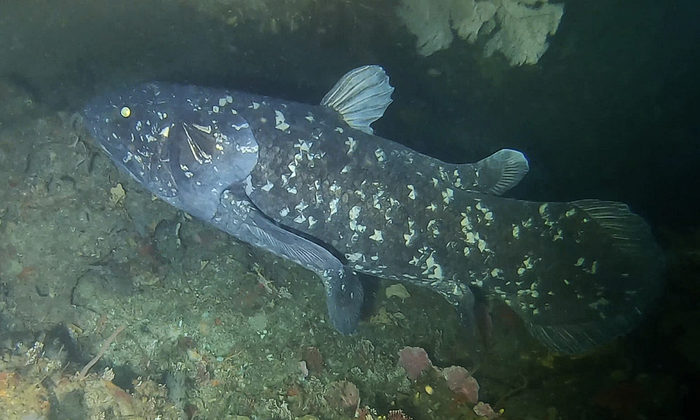Understanding Coelacanths and Evolution: Myths vs. Facts
Written on
Chapter 1: The Coelacanth: An Ancient Wonder
The coelacanth is a fascinating example of an ancient fish that has sparked much interest and debate. Often dubbed a "living fossil," this species has remained relatively unchanged for millions of years, leading to various misconceptions about evolution.

What Exactly Is a Coelacanth?
Gemini explains that the coelacanth (pronounced SEE-lə-kanth) belongs to an ancient group of lobe-finned fish once believed to be extinct. The first living specimen was discovered in 1938 near South Africa. Today, two species are known: the endangered Latimeria chalumnae in the Indian Ocean and Latimeria menadoensis off the coast of Indonesia. These impressive fish can reach lengths of 6.5 feet and weigh up to 200 pounds, preferring deep waters where they can thrive as nocturnal predators.
Coelacanths play a crucial role in understanding the evolutionary link between fish and land vertebrates. Their unique lobe-fins may represent an early stage in the development of limbs. Additionally, they possess a hinged skull that allows them to open their mouths wide, demonstrating their unique adaptations.

How Did Coelacanths Survive the Dinosaur Extinction?
Gemini highlights that the asteroid impact which led to the extinction of the dinosaurs had less of an impact on deep-sea environments. Coelacanths likely benefited from:
- Reduced Impact: The immediate effects of the asteroid, like heat and debris, were less intense at depths of up to 6,500 feet.
- Stable Food Sources: While surface life was disrupted, deep-sea organisms like bacteria and certain algae continued to thrive, providing sustenance for coelacanths.
- Adaptation to Low Oxygen: Coelacanths were already well-suited to low-oxygen environments, giving them an advantage over species dependent on shallow waters.
These factors contributed to the survival of coelacanths while many other species went extinct.
Coelacanths and Evolution: Addressing Misconceptions
Some creationist arguments suggest that coelacanths disprove evolution since they appear unchanged. However, Gemini clarifies that this viewpoint is a misunderstanding. Evolution is not solely about dramatic change; it can also reflect stability in a consistent environment. Here’s why coelacanths still support evolutionary theory:
- Stable Environment: Coelacanths inhabit a deep-sea environment with consistent conditions, reducing evolutionary pressures for change.
- Molecular Evolution: Genetic studies reveal that coelacanths have acquired new genes, indicating ongoing evolution at a molecular level.
- Successful Adaptation: Their continued survival in a specific niche demonstrates successful adaptation, a core principle of evolution.
A Gradual Process of Change
Evolution can be likened to the slow erosion of a mountain range over millions of years. While the broad shape may remain recognizable, the intricate details can change significantly. Similarly, coelacanths may have evolved internally while retaining their external appearance.
Finding Reliable Information
It’s vital to approach creationist claims critically. Here are some trustworthy resources for learning more about evolution and coelacanths:
Chapter 2: Understanding the Universe's Age
In a recent video titled "This is NOT What Evolution Looks Like," various misconceptions about evolution are addressed, with a focus on coelacanths and their role in the evolutionary chain.
Another video, "Misconceptions About Evolution," dives deeper into common myths surrounding evolutionary theory and the evidence that supports it.
Explaining the Universe's Age
Gemini breaks down a simplified equation regarding the universe's age, which was mentioned in a debunking video. While the equation 1/Ho = D/V is relevant to the expansion of the universe, it oversimplifies the complexity of cosmic evolution. The Hubble constant (Ho) represents the current expansion rate, but calculating the universe's age involves understanding how this rate has changed over time.
The Relationship Between Evolution and Entropy
A common claim in creationist circles is that evolution contradicts the principle of entropy, which states that systems tend toward disorder. However, Gemini clarifies:
- Understanding Entropy: While entropy describes the tendency towards disorder, it does not apply to open systems like Earth, which receives energy from the sun.
- Local Complexity: Living organisms can create local order through energy utilization, even as overall entropy increases.
- Evolution’s Nature: Evolution does not aim for increasing complexity; it favors adaptations that enhance survival in specific environments.
In conclusion, both evolution and entropy can coexist, allowing for the emergence of complexity amidst an overall trend toward disorder.
Thank you for engaging with this exploration of coelacanths and evolution!